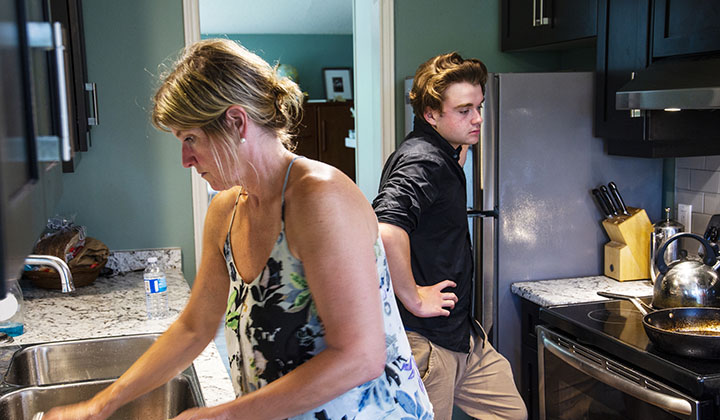
The COVID-19 pandemic has forced us all to repeatedly hear the words – quarantine, isolation and social distancing. Although social distancing tactics show the highest rate of success against the coronavirus, these measures can also impact the mental health of our children. The uncertainty around this time of school closings and social distancing can lead to anxiety and depression. Here are some signs to look for and tips to help everyone in your household get through this stressful time safely.
Keep in mind that changes in mood and behavior are expected during their new normal as children and youth adjust. That said, when youth experience significant increases in emotional and behavioral challenges at home, this can be concerning for parents. How your child responds to stress is dependent on many factors including but not limited to their age or developmental level, exposure to media, temperament, severity and duration of the crisis event and parental reactions.
Signs to watch for
Some behaviors to watch for that might indicate that your child is struggling to cope with recent life changes include:
- increased irritability
- social withdrawal
- sadness or worry
- increased tearfulness
- consistent changes in sleep and/or eating
- increased somatic complaints (headaches, stomachaches)
- difficulties with attention or concentration
- feelings of hopelessness
- a strong focus on death, dying and/or the safety of family members
It is expected that many children will display some of these symptoms during this time. As a parent or guardian, you should have a greater concern when symptoms (1) occur in groups (more than a few symptoms at the same time), (2) repeat throughout the day and continue for many days or weeks and (3) that prohibit their ability to participate in daily activities.
It is also important to remember that younger children or children with developmental disabilities, may not be able to tell us how they are feeling. Monitoring their behaviors, noting any major changes, can help cue caregivers into how these children might be feeling. If parents have concerns, they should reach out to their local mental health resources and many providers are offering remote support via telemedicine during the COVID-19 pandemic.
Model behavior
Caregivers play a big role in helping their children cope with stressful events. By modeling appropriate coping skills, parents and guardians can establish the standard for their kids. These behaviors include:
- taking deep breaths throughout the day
- limiting social media use
- connecting virtually with friends and family
- scheduling preferred activities daily
- taking a walk or doing some vigorous physical activity
- practicing muscle relaxation techniques (here is my favorite script)
The popular term the media has been using during this time is social distancing, but it is actually physical distancing. It is important you help your child maintain their social connections through technology and other creative means, and make sure they understand this is about physical distance instead.
Talking about your feelings, in small doses, can also be helpful for children. It can be very easy to focus on all the things we cannot do right now. Instead of focusing on what cannot be done, have your child create a list of things they can do during stay-at-home orders. This action can be empowering for your child and that feeling will escalate as these activities are completed.
These are unprecedented times, so don’t be hesitate to ask for help. We are all in this together!

